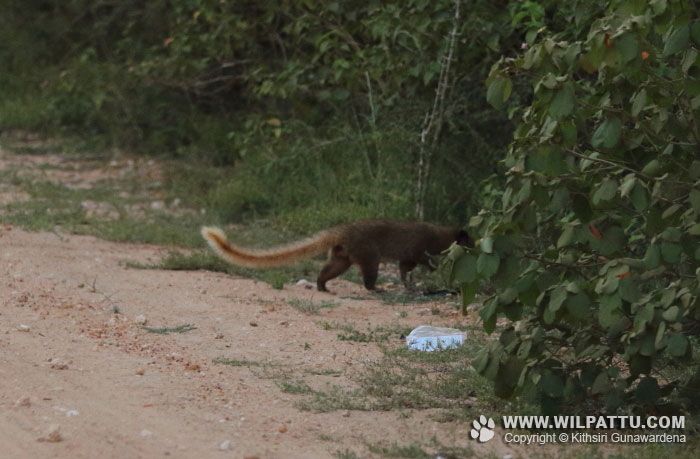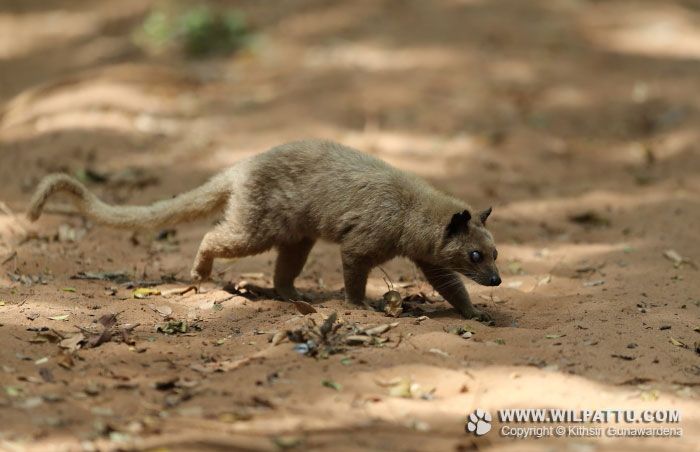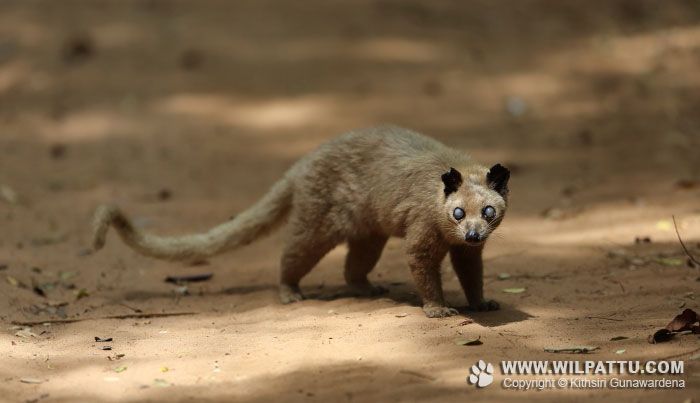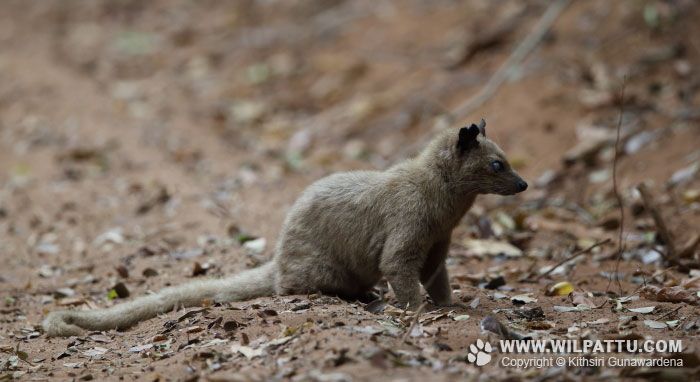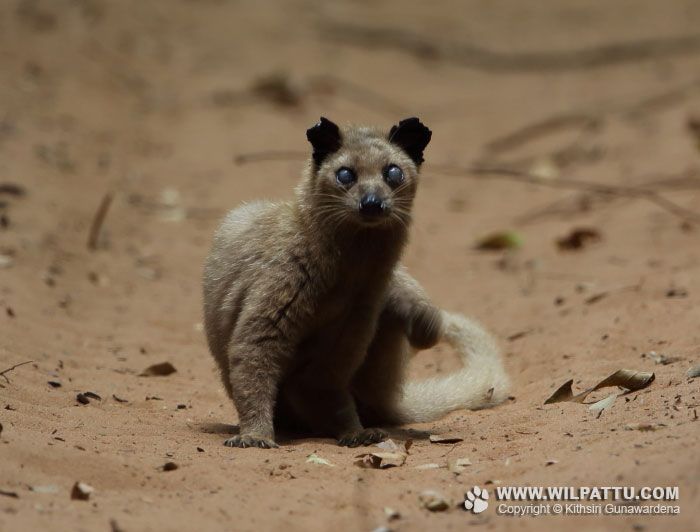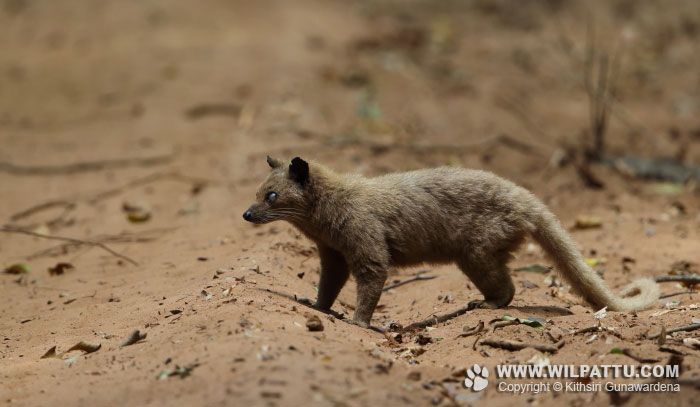
Mammals ‹‹ Go Back
Prior to 2009 the Golden Palm Civet Paradoxurus zeylonensis was considered as one species, which is endemic to the country. In 2009 with the publication of a taxonomic revision the existence of four subspecies have been recognized so far. All these subspecies are endemic to the country.
The subspecies are as follows
- Golden Wet Zone Palm Civet Paradoxurus aureus found in wet and intermediate zones.
- Sri Lanka Brown Palm Civet Paradoxurus montanus found in the intermediate, dry and at high elevations up to the cloud forests.
- Sri Lanka Golden Striped-backed Palm Civet – Paradoxurus stenocephalus found in the intermediate, dry and at high elevations.
- Sri Lanka Mountain Palm Civet Paradoxurus spp. found at Dickoya area.
The conservation status of these species is regarded as endangered/critically endangered (National Red List 2012).
This is a species protected under the Fauna and Flora Protection Ordinance as amended by Act No. 22 of 2009.
The golden Palm Civet is known to be a very secretive nocturnal species rarely seen and photographed with the wild. The knowledge of its ecology is very limited.
One the 7th of March 2015 I observed one at Pomparippu and my field note is reproduced below.
6.18pm a Golden Palm Civet about a 2 km from Pomparippu towards Kollan Kanatte. This beautiful animal just trotted on to the road ahead of the vehicle and was catching insects. On a few occasion it moved in to the forest and re appeared again.
On 15th of October 2016 I observed and photographed another specimen of this species and my field note is reproduced below
12.20pm a Golden Palm Civet on the Galge Vihara road close to the Tala Wila bungalow. I was surprised to see this animal during midday, as it is a nocturnal species usually seen during dusk. I observed this animal for more than half an hour. It was quite apparent that its sight is impaired.
The colour of the upper parts of the animal seen at Pomparippu was much darker than the observed at Tala Wila. The tail of both individuals was lighter than the fur on their bodies. I did not observe any stripes on either of these animals.
There appears to be variations in the upper part colour of these animals even within the sub species. As the upper part colour of animal photographed at Tala Wila is different to that photographed at Pomparippu.
W.W.A. Phillips in his Manual of the Mammals of Ceylon 1935 writes as follows of the colour of this species
General colour of the upper parts, uniform light golden or reddish-brown to dark chocolate brown, the tail being usually lighter and more golden than the body. In some specimens, faint longitudinal stripes may be detected along the middle of the back, while in others, patches of lighter coloured fur may be present on the under parts and towards the tips of the tail; under parts slightly lighter;..
In the young, the general colour is dull mouse-grey-brown, with occasional darker markings or incipient darker stripes along the back.
Females are generally considerably darker than old males but light golden females occur occasionally;
In Wilpattu I have seen this species a on a few occasions running across the road at dusk. On the 7th of March 2015 I observed one at Pomparippu in the evening. The animal was on the road chasing some winged insects. It was not particularly wary of the vehicle and was focused on pursuing the insects. Its upper parts were dark but the tail was light golden brown. On the 15th of October 2016 I was quite pleased to come across one individual on the road at Tala Wila during midday. This animal looked old with its ears torn and was of a uniform light golden with its tail lighter than the body. The eyes were whitish indicating that its sight is impaired due to a cataract. This explained its unusual behaviour of walking about during midday.

